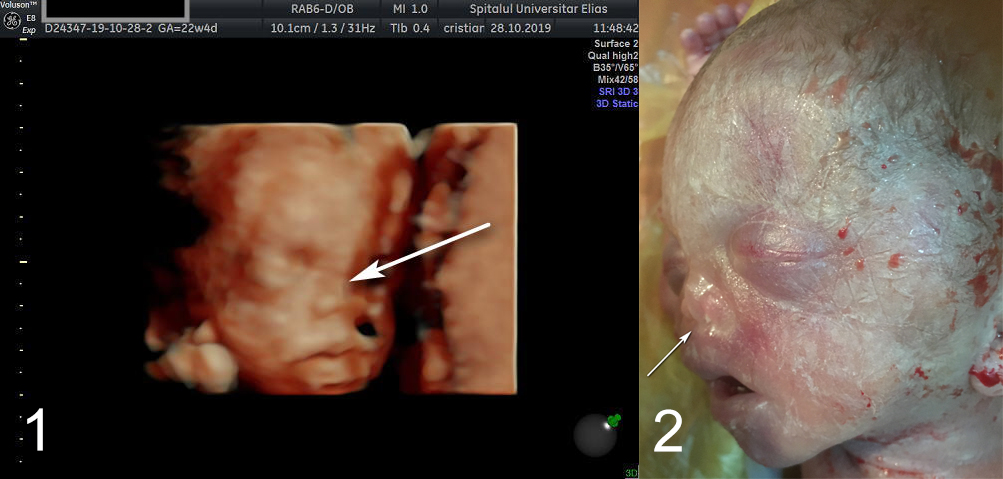Prenatal diagnosis of maxillonasal dysplasia
Image Description
Maxillo-nasal dysplasia (Binder’s syndrome) is a rare congenital anomaly characterized by the hypoplasia of the central part of the face, particularly the area including the nose (abnormally short, flattened nose), and the underdevelopment of the upper jaw (maxillonasal region). The nasal septum is abnormally short, and the nostrils have a semilunar, comma, or a triangular shape. Other abnormalities include the abnormal position of the nasal bones, atrophy of the nasal mucosa, agenesis of the frontal sinuses. Binder’s syndrome is most commonly associated with severe hearing loss and severe intellectual retardation.
We report the case of a 24-year-old pregnant woman who was antenatally diagnosed via the morphological ultrasound in the second trimester (at 22 weeks) of amenorrhea, with a fetus with Binder’s syndrome. The two-dimensional ultrasound revealed at the level of the fetus face a short, flattened nose and hypoplasia of the upper jaw. 3D ultrasound supported the same findings (Figure 1). The diagnostic amniocentesis infirmed any co-existent chromosomal abnormalities. Upon the therapeutic termination of pregnancy performed because of the association between this anomaly and severe intellectual retardation, Binder’s syndrome was confirmed (Figure 2).
The anamnesis revealed that the patient had not taken long-term anticoagulant drugs (warfarin). The patient's family history was also a non-contributing factor.


